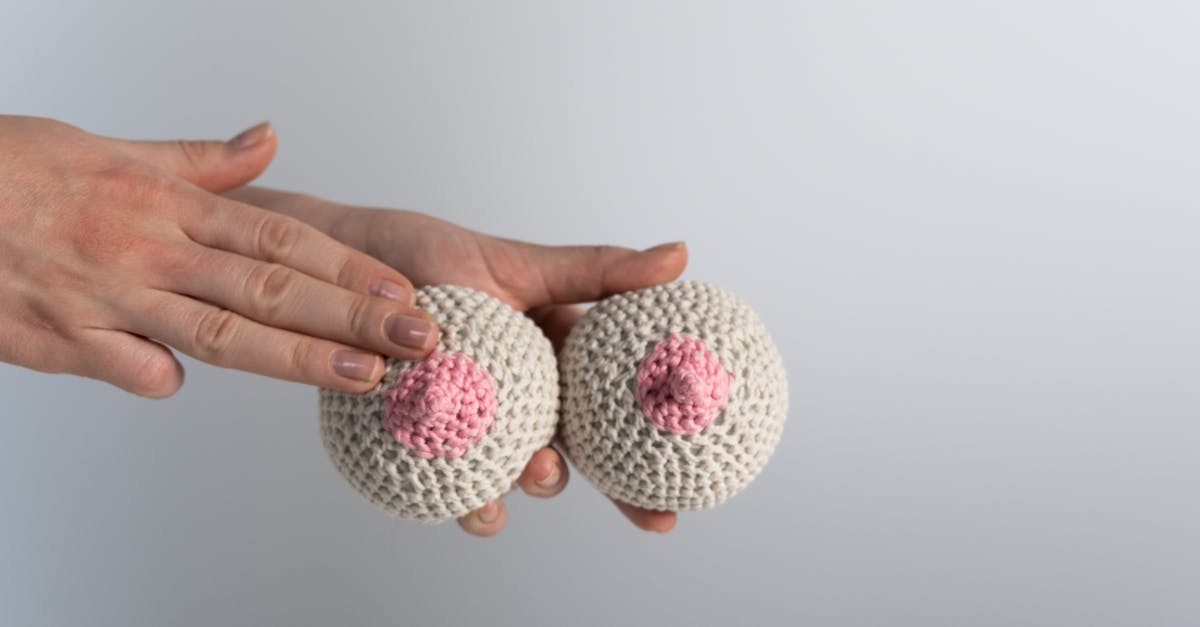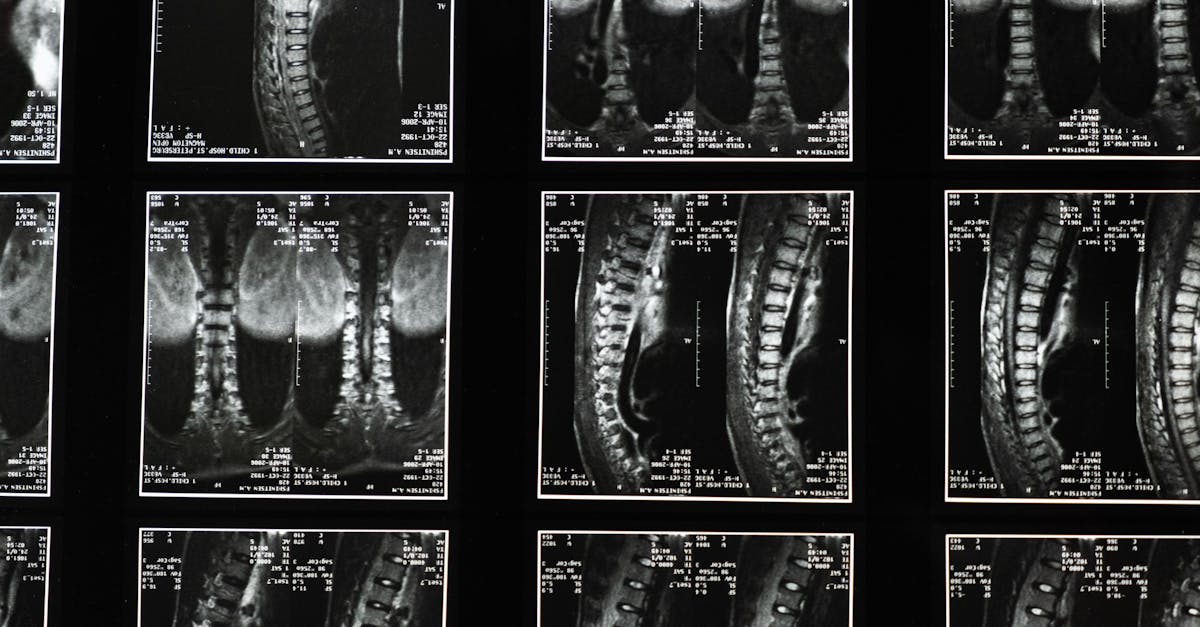In Short, Chronic Labyrinthitis is a persistent condition affecting the inner ear that can lead to debilitating vertigo and balance issues. Understanding its preventive measures can significantly enhance quality of life for those affected. The primary benefit of managing labyrinthitis lies in minimizing symptoms and avoiding recurrences, thus promoting a stronger equilibrium. This involves employing techniques such as physical therapy and lifestyle adjustments, which focus on enhancing inner ear functionality while preventing future episodes. By adhering to these strategies, individuals can regain control, reduce discomfort, and navigate their daily lives with confidence. |
Chronic labyrinthitis is a persistent condition that can lead to ongoing episodes of dizziness and disorientation. To prevent recurrences, it is essential to identify and manage the underlying causes, such as viral or bacterial infections. Adopting a healthy lifestyle that includes regular exercise, proper hydration, and avoiding allergens can significantly reduce the likelihood of flare-ups. Additionally, implementing ergonomic practices and managing stress can help maintain balance and overall well-being. Lastly, consulting healthcare professionals for individualized treatment plans is crucial for long-term management.

Experience Non-Invasive Relief with Pulse Align
At Pulse Align, we understand that achieving a sense of wellness involves more than just addressing symptoms; it’s about creating balance and harmony within your body. Our innovative, non-invasive approach utilizes gentle and imperceptible pulses to assist the body in recalibrating itself, promoting natural posture restoration and effective muscle tone symmetry. This can lead to a noticeable improvement in tension and discomfort, allowing you to regain both physical and mental well-being.
Supporting Natural Recalibration
The beauty of what we do at Pulse Align lies in our commitment to helping clients experience their body’s own ability to restore balance. Rather than targeting specific conditions or pain, our wellness solution focuses on enhancing how your body functions. Through our specialized methodology, many individuals report enjoying a more comfortable experience in their everyday life, as their body learns to navigate and adapt with ease.
Personalized Wellness Journey
We pride ourselves on fostering a personalized approach to wellness at Pulse Align, providing each client with an individualized experience. Numerous clients have shared positive feedback about their journey, reporting significant improvements in neck and back tension, postural balance, and an overall uplift in their approach to wellness. You can be assured that our emphasis is on supporting your natural processes, creating a pathway to well-being that feels intuitively right for you.
Explore Our Services Today!
We invite you to visit our website to learn more about how Pulse Align can be a part of your family’s wellness journey. With locations in cities like La Prairie, Mont-Royal, and Terrebonne, our dedicated team is excited to welcome you. Find a clinic near you and book a consultation—safely and conveniently—regardless of age or previous experience. Remember, Pulse Align works alongside your healthcare services, complementing them with a gentle, family-friendly approach that focuses on your overall well-being.
Medical Disclaimer
The information and advice provided by Pulse Align are complementary and do not replace the care of healthcare professionals. Clients should consult their healthcare team for ongoing support and advice.
- Regular Exercise: Engage in activities that promote overall balance and strength.
- Avoid Triggers: Identify and steer clear of situations that might provoke symptoms.
- Stay Hydrated: Ensure adequate fluid intake to support inner ear health.
- Maintain a Healthy Diet: Include anti-inflammatory foods to reduce the risk of flare-ups.
- Manage Stress: Practice relaxation techniques to promote emotional well-being.
- Routine Check-Ups: Regular visits to a healthcare professional can aid in early detection.
- Limit Caffeine and Alcohol: These substances can exacerbate symptoms.
- Use Ergonomic Solutions: Optimize your workspace to prevent strain and discomfort.

Understanding Chronic Labyrinthitis and Its Recurrences
Chronic labyrinthitis can be a debilitating condition that significantly impacts one’s quality of life. Characterized by the inflammation of the inner ear, it often leads to symptoms such as dizziness, vertigo, and balance disorders. While treatments exist, the key to managing chronic labyrinthitis lies in prevention, as recurrent episodes can prove frustrating and debilitating. By understanding the underlying causes and adopting actionable strategies, individuals can mitigate their risk of recurrence and regain control over their health.
Identify Potential Triggers
One of the essential steps in preventing recurrences of chronic labyrinthitis is to identify and avoid potential triggers. Common factors include viral infections, such as the flu or respiratory infections, which may exacerbate existing inflammation in the inner ear. Maintaining a healthy lifestyle to boost immunity is critical, including staying hydrated, getting sufficient sleep, and consuming a balanced diet rich in vitamins and minerals.
Practice Good Hygiene
To further reduce the risk of viral infections, practicing good hygiene is paramount. Regularly washing hands, avoiding close contact with those who are sick, and ensuring proper sanitation at home can help ward off pathogens that may trigger labyrinthitis.
Regular Exercise and Balance Training
Engaging in regular exercise not only enhances overall well-being but also plays a crucial role in preventing recurrences of labyrinthitis. Physical activity strengthens the vestibular system, which helps the brain interpret signals from the inner ear, thereby improving balance and coordination. Exercises such as yoga, tai chi, or even simple balance exercises at home can strengthen the inner ear’s resilience to disturbances.
Incorporate Vestibular Rehabilitation Therapy
Individuals suffering from chronic labyrinthitis should consider working with a qualified therapist to undergo vestibular rehabilitation therapy. This form of therapy focuses on specific exercises designed to retrain the brain and enhance balance, effectively reducing symptoms and improving functional stability.
Maintain a Healthy Diet
Your diet plays a pivotal role in managing labyrinthitis. Adoption of a well-balanced diet rich in anti-inflammatory foods can be beneficial. Omega-3 fatty acids, found in fish and flaxseeds, are known for their anti-inflammatory properties and may help alleviate symptoms. Additionally, minimizing the intake of processed foods and excess sugar may also reduce inflammation in the body, thus lowering the risk of labyrinthitis flare-ups.
Minimize Stress and Anxiety
Stress and anxiety can contribute significantly to the onset of labyrinthitis symptoms. Finding effective methods to manage stress is essential. Techniques such as mindfulness meditation, deep breathing exercises, and regular relaxation practices can help maintain emotional balance and calm the nervous system.
Prioritize Rest and Recovery
Listening to your body and giving it adequate rest is crucial. During episodes of dizziness or balance issues, staying still and avoiding sudden movements can help the body recover. Developing a self-care routine that includes rest periods can significantly impact long-term management of labyrinthitis.
Through proactive measures such as identifying triggers, engaging in regular exercise, maintaining a healthy diet, and managing stress, individuals can effectively prevent recurrences of chronic labyrinthitis. By adopting an approach that aligns with the principles of Pulse Align, focusing on neuromuscular health and restoring balance, one can pave the way for a healthier, more empowered life.
| Prevention Strategy | Description |
| Regular Exercise | Engaging in routine physical activity to enhance overall health and balance. |
| Avoid Triggers | Identifying and steering clear of known personal triggers that exacerbate symptoms. |
| Stay Hydrated | Maintaining proper hydration to support inner ear function and prevent irritation. |
| Manage Stress | Implementing relaxation techniques such as yoga or meditation to minimize stress levels. |
| Healthy Diet | Eating balanced meals rich in vitamins to promote nerve health and reduce inflammation. |
| Follow-up Care | Regular check-ups with healthcare professionals to assess ear health and make necessary adjustments. |
| Vestibular Rehabilitation | Participating in specialized therapy to improve balance and reduce dizziness. |

Embarking on a Holistic Wellness Journey with Pulse Align
Clients from various regions, including La Prairie and Mont-Royal, have shared their transformative experiences after incorporating Pulse Align’s unique approach into their recovery from Chronic Labyrinthitis. By engaging with methods that align with the body’s natural ability to recalibrate and restore balance, these individuals have felt a significant reduction in their symptoms, allowing them to rediscover activities they once loved.
One client from Sainte-Marie expressed, “Since I started treatment at Pulse Align, I didn’t just notice a decrease in my dizziness; I felt more in tune with my body. It’s as if they helped me to reconnect with my inner balance.” This sentiment echoes through the experiences of many clients, who report improvements in their overall wellness by focusing on holistic recovery.
In Deux-Montagnes, another client remarked, “The emphasis on a natural approach really resonated with me. It feels refreshing to undergo treatment that respects my body’s rhythms.” This highlights how Pulse Align’s commitment to supporting the body’s natural processes has inspired many clients to embrace wellness in a more personal, meaningful way.
Moreover, individuals from as far as Chicoutimi and Saint-Jérôme have noted that the guidance from Pulse Align’s professionals has been invaluable in navigating the complexities of labyrinthitis. Clients have reported feeling empowered through tailored programs designed to help prevent recurrences, fostering profound changes in their mental and physical health.
In regions like Terrebonne and Châteauguay, Pulse Align has become synonymous with reliable wellness options, with numerous testimonials emphasizing the collaborative approach between the center and their healthcare teams. This partnership ensures that clients and their families receive comprehensive support throughout their wellness journeys, underlining a shared commitment to recovery.
As a testament to these encouraging outcomes, many clients express gratitude for the holistic techniques employed at Pulse Align, affirming that they are not only addressing symptoms but also cultivating a long-lasting sense of well-being. For anyone feeling the weight of Chronic Labyrinthitis, exploring options at Pulse Align could be a significant step toward rejuvenation.
Chronic labyrinthitis is a condition that affects the inner ear, leading to symptoms such as dizziness, imbalance, and hearing disturbances. It is often caused by viral infections, bacterial contaminants, or inflammation of the inner ear structures. Understanding the nature of this condition is vital for individuals who face recurrent episodes, as prevention is key to maintaining a higher quality of life.
The symptoms of chronic labyrinthitis can be debilitating, causing significant disruptions in daily activities. Patients may experience a sensation of spinning, difficulties with balance, and nausea, which can lead to anxiety and an overall decline in mental health. Given these challenges, it is essential for individuals to seek appropriate treatments and adopt preventative measures. Regular consultations with healthcare professionals can help ensure that symptoms are managed effectively while addressing the root causes.
One effective strategy for preventing recurrences of chronic labyrinthitis is the employment of vestibular rehabilitation therapy. This form of physical therapy focuses on exercises and activities designed to improve balance and reduce dizziness. Such interventions are crucial, especially for those who may have sustained damage to their inner ear. By engaging in a vestibular rehabilitation program, patients can significantly reduce their risk of recurring symptoms and enhance their overall stability.
In addition, lifestyle modifications play a crucial role in prevention. Individuals with a history of chronic labyrinthitis should be mindful of their general health. Maintaining a strong immune system through a balanced diet and regular exercise can help ward off infections that may trigger labyrinthitis episodes. Furthermore, proper hydration and stress management techniques can also contribute positively to one’s overall well-being.
While some medication may be necessary to manage symptoms, it is crucial for patients to consult with healthcare professionals about appropriate prescriptions. Certain antihistamines and anti-nausea medications may provide temporary relief; however, they should not be relied on for extended periods. A healthcare provider could assist in establishing a suitable medication plan that fosters recovery without leading to dependence on vestibular suppressants.
Dr. Sylvain Desforges, who specializes in chronic pain management and the integration of innovative healthcare practices, emphasizes the importance of an evidence-based approach in dealing with chronic conditions such as labyrinthitis. As the founding president of TAGMED clinics and the ACMA association, his expertise lies in osteopathy, naturopathy, and manual medicine. Through advanced technologies such as spinal decompression, laser, and shockwave therapy, Dr. Desforges strives to optimize his patients’ health.
Dr. Desforges advocates for a comprehensive analysis of each patient’s medical history, lifestyle, and symptomatology to provide personalized treatment plans. By addressing the individual needs of his patients, he aims to empower them on their journey to wellness. Through his clinics in Montreal, Terrebonne, and Mont-Royal, he ensures that patients receive the best care available, maximizing their health outcomes.
Lastly, precautionary measures against chronic labyrinthitis should never be overlooked. Avoiding situations and activities that could lead to ear infections, minimizing exposure to loud environments, and practicing good ear hygiene can significantly decrease the risk of recurrences. Additionally, regular health assessments can help detect potential issues before they escalate into more serious complications. With the right approach, individuals can navigate the challenges of chronic labyrinthitis effectively and reclaim their health.
Neurovertebral Decompression Technology by TAGMED: A Solution for Chronic Pain
Mécanisme d’action
The neurovertebral decompression technology offered by TAGMED functions by applying a controlled and progressive traction force to the spine. This innovative approach serves to increase the space between vertebrae, effectively reducing pressure on intervertebral discs and nerve roots. By creating this extra room, the method facilitates improved fluid circulation within the targeted area. As a result, the process helps to decrease inflammation, which is often a significant contributor to chronic pain. This targeted decompression not only alleviates discomfort but also encourages the body’s natural healing mechanisms to take effect, providing patients with a comprehensive approach to managing their chronic conditions.
Avantages spécifiques
This non-invasive technique is particularly beneficial for patients suffering from chronic pain related to disc herniation, disc bulging, or moderate to severe spinal or foraminal stenosis, as discussed in Chronic Labyrinthitis: How to Prevent Recurrences. The method significantly reduces the pressure exerted on nerve structures, optimizing fluid circulation around the discs. Consequently, patients often experience a more rapid recovery and an improved quality of life. Many individuals note a substantial relief from chronic pain, enabling them to engage in daily activities with greater ease. The technology not only eases discomfort but also contributes to the prevention of potential recurrences of pain, establishing a more sustainable path to well-being.
Comparaison avec d’autres traitements
When compared to conventional therapeutic approaches for managing the conditions highlighted in Chronic Labyrinthitis: How to Prevent Recurrences, the neurovertebral decompression technology of TAGMED offers unique advantages. Unlike traditional pain management strategies, such as analgesics, corticosteroid injections, or even surgery, this innovative solution stands out for its non-invasive nature and minimal risk profile. Patients can experience an often quicker recovery with fewer side effects, as it negates the need for potential complications associated with surgical interventions. Moreover, the reduced reliance on medication decreases the chances of adverse drug reactions, making this approach appealing to a broad spectrum of patients.
Études de cas ou témoignages
Numerous case studies illustrate the effectiveness of TAGMED’s neurovertebral decompression technology in alleviating chronic pain. For instance, several patients have reported a lasting reduction in pain following treatment, with some individuals resuming their daily activities much sooner than anticipated. Testimonials reveal success stories of patients who have diminished their dependency on pharmacological interventions, attributing their enhanced well-being to this unique therapeutic approach. Stories abound of individuals regaining control over their lives, showcasing how neurovertebral decompression not only addresses pain management but also fosters overall health restoration.
Preventing recurrences of chronic labyrinthitis requires a multifaceted approach that addresses both the underlying causes and the symptoms associated with the condition. One effective strategy is to focus on enhancing the overall health of the inner ear and its functions. This can include regular exercise to promote circulation and to strengthen the body’s balance systems. Activities that encourage coordination and balance, such as yoga or tai chi, can be particularly beneficial.
Additionally, managing stress levels is crucial, as heightened stress can exacerbate symptoms of labyrinthitis. Techniques such as meditation, deep breathing exercises, and mindfulness practices can help create a calming environment that may reduce the likelihood of flare-ups. It is also essential to maintain a balanced diet that supports the immune system, including foods rich in antioxidants, vitamins, and minerals. Staying hydrated is equally important, as dehydration can lead to dizziness and other symptoms.
Another vital aspect involves avoiding known triggers that could lead to a recurrence, such as specific allergens or pollutants in the environment. Identifying and minimizing exposure to these triggers can play a significant role in maintaining ear health. Furthermore, regular visits to a healthcare professional can help catch any emerging issues early, providing an opportunity for proactive management before the situation escalates.
Finally, engaging in physical therapy may assist in re-training the body’s balance mechanisms, making them less susceptible to the disruptions caused by labyrinthitis. Therapists can provide specialized exercises that enhance vestibular function, contributing to long-term stability. By implementing a comprehensive prevention plan, individuals can significantly reduce the likelihood of experiencing the debilitating symptoms of chronic labyrinthitis again.

Do you suffer from a chronic condition that responds little or not at all to conservative treatments?
At Pulse Align, we introduce a non-invasive and innovative method that helps restore the body’s natural balance and posture through gentle, imperceptible pulses. This unique approach encourages the body to recalibrate itself, potentially leading to a noticeable reduction in muscle and joint tension. By focusing on the natural processes of the body, we offer a compelling alternative for those seeking holistic wellness.
Instead of concentrating on discomfort directly, Pulse Align assists the body in finding its equilibrium naturally. This practice often results in remarkable improvements in overall comfort and posture. Through our gentle stimulation, clients may find their bodies responding positively, leading to enhanced well-being and functional balance.
We take pride in our personalized approach at Pulse Align, wherein each experience is tailored to the unique needs of our clients. Many have shared testimonials describing their journey with us, noting significant strides in reducing tension, fostering comfort, and promoting overall wellness. Clients have left feeling lighter and more aligned, appreciating the supportive community we foster to help them reclaim their vitality.
If you are curious to learn more about how Pulse Align supports individuals and families in their wellness journeys, we invite you to explore our services further on our website. You can easily find nearby locations, including cities like La Prairie, Mont-Royal, and Terrebonne, to suit your needs. Take a step towards enhancing your quality of life by booking a consultation with us, knowing that Pulse Align works alongside your healthcare team, respecting your holistic health journey.
Discover our unique approach to cultivating muscle tone symmetry and improving posture that accommodates everyone, including young children and expectant parents. With our safe, non-invasive, and family-friendly methods, you are encouraged to visit our website and book an appointment online today.
Frequently Asked Questions
Vertigo
- Should anti-vertigo drugs be taken long-term?They’re generally short-term. Long-term management should address the root cause.
- Do coffee or alcohol worsen vertigo?Excessive alcohol or caffeine may worsen vertigo symptoms in sensitive individuals.
- Les vertiges nocturnes existent-ils ?Oui, le VPPB peut se manifester en se tournant dans le lit la nuit, provoquant des vertiges nocturnes.
- Les vertiges peuvent-ils indiquer un problème neurologique ?Oui, dans de rares cas, un vertige peut être signe d’un AVC ou d’une sclérose en plaques. Un avis médical est nécessaire si d’autres symptômes apparaissent.
- Can neck problems cause vertigo?Severe neck stiffness or osteoarthritis may contribute to a feeling of instability, though the direct link is debated.
- La maladie de Ménière est-elle chronique ?Oui, c’est une maladie chronique qui évolue par crises, avec des périodes de rémission et de rechutes.
- Do gaze stabilization exercises help?Yes, in vestibular rehab, they help the brain adapt and compensate for sensory imbalances.
- Can neck muscle tension cause vertigo?Extreme tension may affect blood flow and posture, contributing to a feeling of dizziness.
- La position du corps influence-t-elle les vertiges ?Oui, dans le VPPB, changer de position de la tête (se coucher, se tourner dans le lit) peut déclencher une crise.
- Quelles sont les causes les plus fréquentes des vertiges ?Ils sont souvent causés par des troubles de l’oreille interne (VPPB), la maladie de Ménière, la névrite vestibulaire, ou des problèmes circulatoires.
Sophie Morel believes that knowledge is the most powerful step toward healing—and she’s here to illuminate the path forward for anyone facing the challenges of vertigo. At Pulse Align, Sophie not only highlights the latest breakthroughs in neuromodulation and non-invasive health technologies but also translates complex research into practical, everyday guidance. Her approach is grounded in empathy and fueled by a genuine drive to help readers find balance, both literally and figuratively. From exploring advanced treatments to sharing firsthand patient stories, Sophie’s heartfelt advocacy ensures that no one has to face the spinning world of vertigo alone.
Medical Disclaimer
The information and advice provided on this site do not replace the advice, diagnosis, or treatment of a healthcare professional. Please note that the author of this article is neither a doctor nor a specialist in a medical specialty as defined by the Collège des médecins du Québec. Manual medicine, functional medicine, and sports medicine as described on this site exclude any medical treatment or diagnosis made by a doctor or medical specialist. Always consult your doctor for any medical questions. For more details, please read our complete Legal Notice.
References
- Nanda, A., & Tinetti, M. E. (2003). Chronic Dizziness and Vertigo. In Geriatric Medicine (pp. 995–1008). Springer-Verlag. https://doi.org/10.1007/0-387-22621-4_68
- (20+) Facebook. (n.d.). Retrieved December 19, 2024, from https://www.facebook.com/
- Jaradeh, S. S., & Prieto, T. E. (2003). Evaluation of the autonomic nervous system. Physical Medicine and Rehabilitation Clinics, 14(2), 287–305. https://www.pmr.theclinics.com/article/S1047-9651(02)00121-3/abstract
- ALSharif, D. S. (2021). An Examination of the Potential for Autonomic Nervous System Responses and Postural Sway to Serve as Indicators of Visual-Vestibular Mismatch. Temple University. https://search.proquest.com/openview/8f9dec4952045e09ec36542185cffc12/1?pq-origsite=gscholar&cbl=18750&diss=y
- Okada, M., Matsuto, T., Satoh, S., Igarashi, S., Baba, M., Sugita, O., & Okada, M. (1996). Role of pulse wave velocity for assessing autonomic nervous system activities in reference to heart rate variability. Medical Informatics, 21(1), 81–90. https://doi.org/10.3109/14639239609009013
- Guerra, J., & Cacabelos, R. (2019). Pharmacoepigenetics of vertigo and related vestibular syndromes. In Pharmacoepigenetics (pp. 755–779). Elsevier. https://www.sciencedirect.com/science/article/pii/B9780128139394000280
- Grubb, B. P. (1999). Pathophysiology and differential diagnosis of neurocardiogenic syncope. The American Journal of Cardiology, 84(8), 3–9. https://www.sciencedirect.com/science/article/pii/S0002914999006918
- Li, Y., Yang, L., Dai, C., & Peng, B. (2022). Proprioceptive cervicogenic dizziness: a narrative review of pathogenesis, diagnosis, and treatment. Journal of Clinical Medicine, 11(21), 6293. https://www.mdpi.com/2077-0383/11/21/6293
- Bracher, E. S., Almeida, C. I., Almeida, R. R., Duprat, A. C., & Bracher, C. B. (2000). A combined approach for the treatment of cervical vertigo. Journal of Manipulative and Physiological Therapeutics, 23(2), 96–100. https://www.sciencedirect.com/science/article/pii/S0161475400900745
- Collet, C., Vernet-Maury, E., Miniconi, P., Chanel, J., & Dittmar, A. (2000). Autonomic nervous system activity associated with postural disturbances in patients with perilymphatic fistula: sympathetic or vagal origin? Brain Research Bulletin, 53(1), 33–43. https://www.sciencedirect.com/science/article/pii/S0361923000003063



